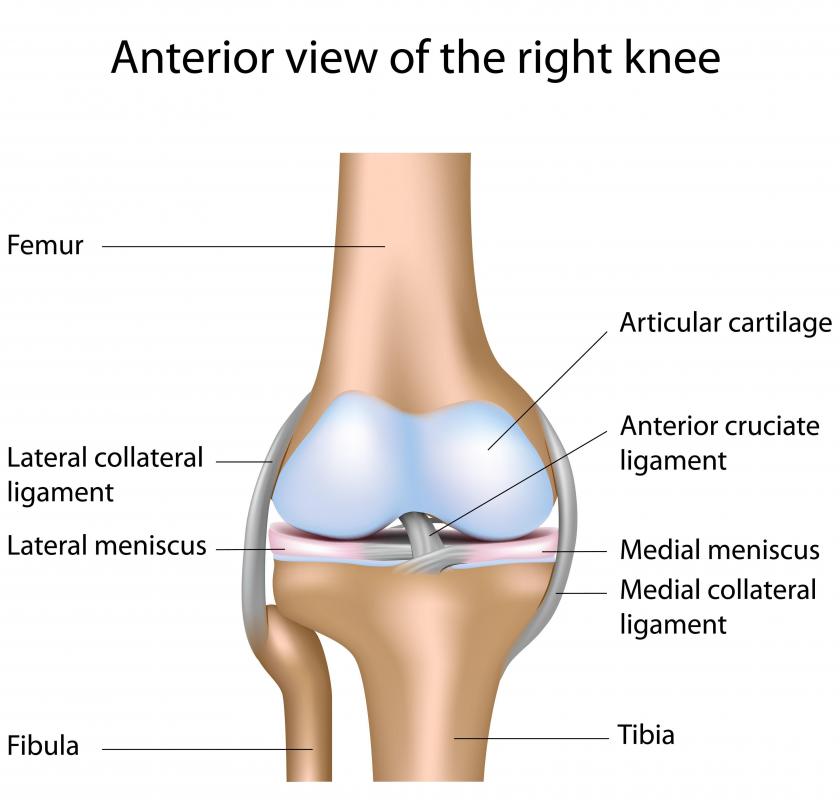At WiseGEEK, we're committed to delivering accurate, trustworthy information. Our expert-authored content is rigorously fact-checked and sourced from credible authorities. Discover how we uphold the highest standards in providing you with reliable knowledge.
What can I Expect from Knee Microfracture Surgery?
Knee microfracture surgery involves drilling tiny holes in the knee bone, stimulating the growth of new fibrous tissue, which replaces worn cartilage. Cartilage is a soft tissue found in all joints that serves as a cushion between the bones, allowing them to move and flex without pain or inhibition. It wears down over time, however, and can even tear if subjected to extreme trauma. Knees are commonly subject to cartilage injuries.
The microfracture technique dates to the late 1980s, and was developed in America by Colorado doctor Richard Steadman. Though cartilage does not normally heal by itself, Steadman found that small lesions made in nearby bone released a particular type of stem cell from the marrow. These stem cells repaired the lesions with a tissue very similar in characteristics to cartilage. With the correct placement, the new tissue effectively replaced the previous cartilage, effectively healing the damage.

Knee microfracture surgery itself is relatively minor compared to other alternatives, such as partial or total joint replacement. The operation is arthroscopic in nature, meaning a small scope is inserted through an incision to guide the surgeon through a video feed. A tiny awl is used to create the lesions in the bone from which the stem cells are emitted as part of the clotting process.

An entire knee microfracture surgery typically takes less than an hour. Given only the small incisions needed for arthroscopic surgery, it is possible to use only a local anesthetic. For a variety of reasons however, a surgeon may recommend general anesthesia for some patients. Barring complications, in either case it remains an outpatient procedure.

It takes eight to fifteen weeks for the blood clot to turn into the fibrous tissue that can take over the duties of the damaged or lost cartilage. During this time, great care should be taken by the patient to perform adequate amounts of physical therapy without over-stressing the joint and risking setbacks. Crutches are necessary for at least the first month after surgery, and no weight should be put on the knee during this time.

Though generally successful, with a failure rate nearing only 20 percent for patients under the age of 45, knee microfracture surgery is not without its limitations. It is only recommended for individuals with mild to moderate knee conditions, and diligent rehabilitation is crucial for proper recovery. In most cases this involves at least six hours a day using a continuous passive motion (CPM) machine for a period of weeks. The strict routine is made harder to adhere to by the fact that in many cases, patients feel minimal pain after surgery, if pain is detectable at all. As a result, patients may feel their knee has healed more than it actually has, and overwork it.
AS FEATURED ON:
AS FEATURED ON:














Discussion Comments
I had microfracture surgery done back in march. Nearly seven months later, I'm looking to get back to playing football. When I train I have pain at a 5 after training then a 3 next day until 0 the next. Is this the way it's going to be?
Post your comments